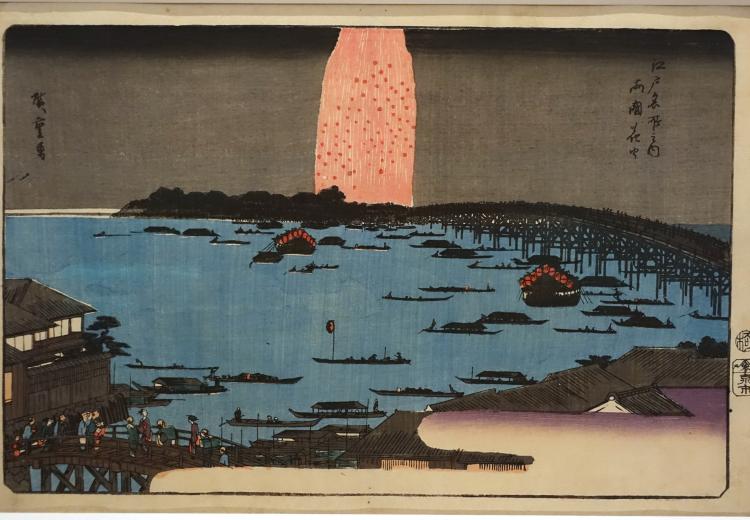Life in the Floating World: Ukiyo-e Prints and the Rise of the Merchant Class in Edo Period Japan

Fireworks at Ryogoku, by Utagawa Hiroshige, Japan, Edo period. Woodblock print on paper.
The Edo Period (1603-1868) in Japan was a time of great change. The merchant class was growing in size, wealth, and power, and artists and craftsmen mobilized to answer the demands and desires of this growing segment of society. Much of the art of this period reflects both the tastes and the circumstances of this increasingly powerful class. Perhaps the most well known art form that gained popularity during this period was the woodblock print, which is often referred to as ukiyo-e prints, after one of the most common themes—the entertainment districts of Edo and Kyoto—presented in the medium. This lesson will help teachers and students to investigate Edo Period Japan through the window provided by these images of the landscape, life, and interests of the rising townspeople. Students will use the famous woodblock prints of artists such as Hiroshige (1797-1858) and Hokusai (1760-1849) as primary documents to help them gain insight on Japanese history.
Guiding Questions
What do ukiyo-e prints tell us about Edo Period Japan?
Learning Objectives
Identify the audience for ukiyo-e prints
Discuss how this art form addresses the interests and tastes of this group
Identify ways in which ukiyo-e prints reflect life in Edo Japan, particularly for members of the merchant class
Discuss the ways in which the rise in popularity of the ukiyo-e print parallels and reflects the growing power and wealth of the merchant class
